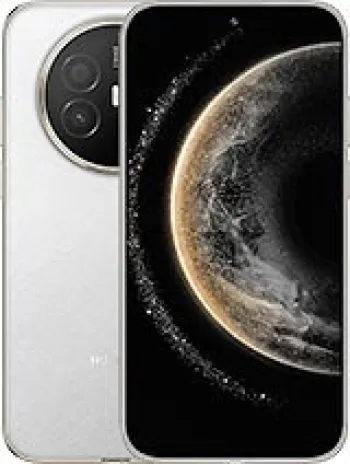
Design and Build
The Huawei Y7 (2018) is a blend of style and comfort, offering a sleek design that fits nicely in the hand. With dimensions of 158.3 x 76.7 x 7.8 mm and weighing just 155 grams, it's an easily portable device without being too light. The phone's body is designed to cater to both aesthetic and functional needs. It supports both single- and dual-SIM operations, providing flexibility to consumers who often travel or need to manage different numbers.
Display
The 5.99-inch IPS LCD screen is a central feature of the device, offering a viewing experience that is both vibrant and immersive. With a resolution of 720 x 1440 pixels and an aspect ratio of 18:9, it provides clear imagery with a decent pixel density of around 269 ppi. This screen is well-suited for multimedia consumption, casual gaming, and browsing, striking a balance between size and usability.
Performance
Powered by the Qualcomm MSM8937 Snapdragon 430 chipset, the Huawei Y7 (2018) is built for efficiency alongside performance. The octa-core 1.4 GHz Cortex-A53 CPU ensures smooth handling of everyday tasks, while the Adreno 505 GPU manages graphics processing for better gaming and video playback. Although it comes with 2GB of RAM, which may seem modest compared to current standards, it is sufficiently optimized for the Android 8.0 (Oreo) with EMUI 8 to deliver a responsive user experience under normal usage conditions.
Storage
The device offers 16GB of internal storage, which might be deemed limited if you are installing multiple apps or storing media files extensively. Fortunately, the phone includes a dedicated microSDXC slot, allowing users to expand storage and accommodate a larger amount of data with ease, making it a versatile choice for users with different storage needs.
Camera Capabilities
Photography features prominently in the Huawei Y7 (2018), with a 13 MP main camera equipped with f/2.2 aperture and PDAF for swift autofocus. The camera also includes practical features such as LED flash, HDR, and panorama, enhancing photo quality in diverse lighting environments. It supports 1080p video recording at 30fps, suitable for capturing moments with sufficient clarity. The front-facing 8 MP selfie camera also supports 1080p video, providing adequate quality for video calls and self-portraits.
Battery Life
Equipped with a non-removable 3000 mAh Li-Ion battery, the Huawei Y7 (2018) handles a full day of mixed usage ranging from calls, texting, browsing, and moderate gaming. The battery life is enhanced by efficient power management features built into EMUI 8, ensuring users can rely on their device throughout a typical day without frequent charging requirements.
Connectivity and Additional Features
The device supports GSM, HSPA, and LTE technologies, offering reliable connectivity through various network bands (2G, 3G, and 4G). Connectivity options include Wi-Fi 802.11 b/g/n with Wi-Fi Direct, Bluetooth 4.2 with A2DP, and LE for improved wireless audio support. NFC is available on specific models (LDN-L01) which is a plus for contactless payments and data transfer. Additional features like GPS and GLONASS for navigation and an FM radio add to the device's utility.
Audio and Sound Quality
The Huawei Y7 (2018) provides adequate sound quality through its loudspeaker and retains the 3.5mm headphone jack, which has become a valuable feature for many users. This allows the use of a wide range of audio peripherals without needing adapters or alternative solutions.
Sensors and Security
The device comes packed with essential sensors like the rear-mounted fingerprint sensor for secure and fast unlocking. Additional sensors include an accelerometer, proximity sensor, and compass, adding functionality for various applications and user interactivity.
Price and Availability
Available in attractive colors such as Black, Gold, and Blue, the Huawei Y7 (2018) appeals to aesthetics alongside practical features. Originally launched in March 2018, it provides a budget-friendly option, approximately priced at 150 EUR, thus appealing to cost-conscious consumers looking for a reliable smartphone.
Conclusion
The Huawei Y7 (2018) stands as a testament to balancing affordability with functionality in the competitive smartphone market. While it might not compete with the high-end flagship devices in terms of raw power or advanced features, it offers remarkable value for users seeking a reliable and stylish phone for basic smartphone needs. Its strengths lie in its balanced set of features, from an impressive display to robust connectivity options, making it a viable choice for a wide range of consumers.
Key Features of Huawei Y7 (2018)
- Supports GSM / HSPA / LTE technologies for wide network compatibility
- Sleek design with dimensions of 158.3 x 76.7 x 7.8 mm and lightweight at 155 g
- Large 5.99-inch IPS LCD display with a resolution of 720 x 1440 pixels
- Packed with Android 8.0 (Oreo) and EMUI 8 for smooth performance
- Uses Qualcomm MSM8937 Snapdragon 430 chipset with an Octa-core 1.4 GHz CPU
- Expandable storage with a dedicated microSDXC card slot
- 13 MP main camera with PDAF, LED flash, HDR, and panorama features
- 8 MP front camera supporting 1080p video recording
- Equipped with a rear-mounted fingerprint sensor for enhanced security
- 3000 mAh non-removable Li-Ion battery ensures a reliable power source
- Comprehensive connectivity options including Bluetooth 4.2, NFC, and Wi-Fi Direct
- Available in three colors: Black, Gold, and Blue
Drawbacks of Huawei Y7 (2018)
- Low screen resolution of 720 x 1440 pixels, which may result in less sharp display quality compared to higher resolution displays.
- Limited performance with Snapdragon 430, which is a lower-end chipset and may not handle heavy applications or multitasking efficiently.
- Only 2GB of RAM, which can be limiting for running multiple applications smoothly at the same time.
- Limited internal storage of 16GB, which can fill up quickly, although it can be expanded with a microSD card.
- Non-removable battery, which makes it difficult to replace the battery when it starts to degrade over time.
- MicroUSB 2.0 charging port, which is slower than the more modern USB-C ports.
- No fast charging support, leading to longer charging times.


View Also
More Phones
All Rights Reserved +14268 Phones © Mobilawy 2025

























